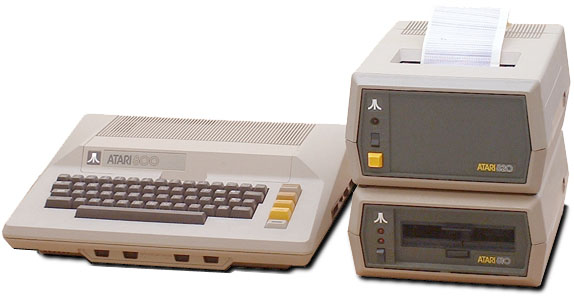
The Icon Editor (“ICED”) Program version 1.1 was written by Jim Kienitz and copyrighted in 1985 by Computer Curriculum Corporation. After patiently waiting for the emulated computer to start, I was finally able to open the floppy disk-pretty exciting after hours of decoding, converting, and digging.

The Hatari emulator is the next best thing to sitting down in front of a physical Atari ST computer.
#Atari 800 disk archive software#
The software Aufit could analyze and convert the data to STX format for Atari ST. Aufit and Hatari are two pieces of software from the Atari and retro-computing community that also work well for Atari digital archives exploration and preservation. The next step was to convert the MFM format disk image from the Kryoflux into a copy that would work on the Atari ST computer. GEM was among the first graphical user interface (GUI) environments where users could point and click, explore drop-down menus, and view files as pictorial icons. The ICN format was for the GEM desktop environment created by Digital Research and used by the Atari ST computer. Opens in a new window The archivist and digital preservation communities have worked to document opens in a new windowfile formats from computing history. Aha! It appeared to be some part of a football game.
#Atari 800 disk archive code#
Then, to determine which was correct, I explored the MFM disk image directory to find 1987 programs (PRG), icons (ICN) files with football player names such as Quarterback and Tight End, and a 1985 assembly code file. Two formats-magnetic frequency modulation (MFM) and Commodore Business Machine group code recording (CBM-GCR)-produced successful disk image files. In my best investigative mode, I tested every format that the Kryoflux recognizes, because the disk year was unknown. I selected the disk image of a 3.5-inch floppy disk that read “Icon Editor” with no date and no brand name. Spanning decades, I recognized that the Atari floppy disks would include a variety of formats requiring digital detective work. (If you’re not familiar with the term “disk image,” it’s a opens in a new windowcomputer file containing the contents and structure of a disk opens in a new windowvolume or an entire opens in a new windowdata storage device, such as a floppy disk.) Recently, I decided to dig into the Atari Coin-Op Division Corporate Records (1969–2002) from The Strong’s Brian Sutton-Smith Library and Archives of Play.

In some opens in a new windowcases, the Kryoflux was a useful tool to capture old games and development materials but, with more than 1,500 floppy disk images in our holdings, there’s still much to be done.

Reading a floppy disk in the 21st century was the first step necessary to preserve hundreds of floppy disks in The Strong’s archival collections. Opens in a new window In 2018, The Strong embarked on a opens in a new windowproject to digitize floppy disks using a device called the Kryoflux to capture the data stored on 3.5- and 5.25-inch floppy disks.


 0 kommentar(er)
0 kommentar(er)
